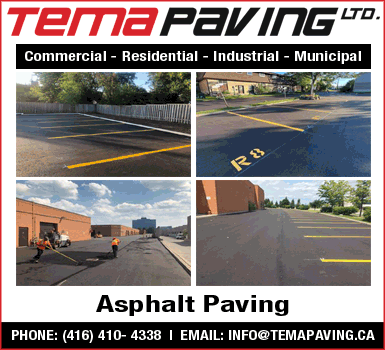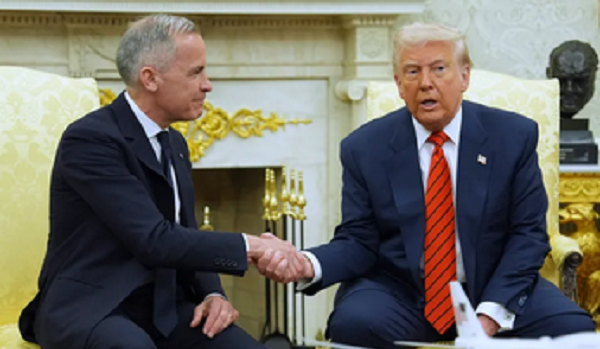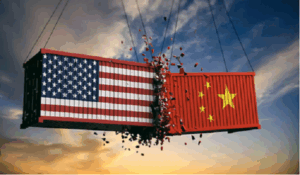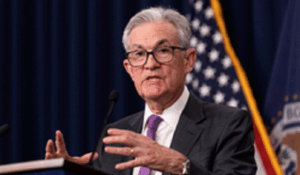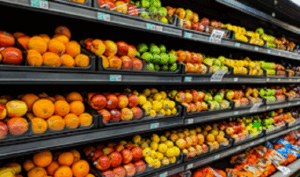‘The end of the beginning’: Carney’s meeting with Trump yields no breakthroughs, and no blowups
Mark Carney wrapped up what he called constructive discussions during his first face-to-face meeting as Prime Minister with Donald Trump, which yielded no measurable progress in ending Mr. Trump’s costly trade war but also avoided any sign of conflict with the mercurial U.S. President.
Mr. Carney said Tuesday’s White House tête-à-tête, where Mr. Trump praised him several times and said he preferred him to predecessor Justin Trudeau, marked the “the end of the beginning” of a process that will see the United States and Canada redefine their relationship after months of acrimony.
Mr. Carney’s meeting with Mr. Trump took place just over a week after he won an election in which he campaigned on being the best person to deal with the President. An Oval Office sit-down Tuesday, which included an extended public question-and-answer session with reporters, gave Canadians their first chance to see an exchange between the two leaders
The Tuesday talks were perhaps the highest-stakes discussions ever between a Canadian prime minister and U.S. president. In addition to the trade war, they came amid Mr. Trump’s repeated annexation threats.
Speaking to reporters, Mr. Trump made no promises except that he would negotiate on trade. At the same time, he said he was not sure the trilateral United States-Mexico-Canada Agreement (USMCA) is necessary any longer. Nothing Mr. Carney might say, he added, would persuade him to lift damaging tariffs on Canada. And he insisted that he no longer wants Canadian-built automobiles being sold in the United States.
The U.S. President also indicated that he’s not giving up on the idea of annexing Canada as the 51st state, a persistent theme of his since the 2024 presidential election. “Never say never,” he told Mr. Carney in front of reporters. “I’ve had many, many things that were not doable, and they ended up being doable.”
Mr. Carney interjected to flatly rule out political union with the United States.
“As you know, from real estate, there are some places that are never for sale. We’re sitting in one right now,” he said, referring to the White House. “Having met with the owners of Canada over the course of the campaign the last several months, it‘s not for sale, won’t be for sale ever,” the Prime Minister said. “But the opportunity is in the partnership and what we can build together.”
Later, when Mr. Trump suggested that Canada might change its mind on annexation, Mr. Carney said: “Respectfully, Canadians’ view on this are not going to change.”
The Prime Minister also pushed back when Mr. Trump insisted that the U.S. does not need Canada by reminding him that Canada is the “largest client of the United States.”
Mr. Carney appeared to be treading a careful line during the half-hour public appearance with the U.S. President. He demonstrated that he was standing up to Mr. Trump’s annexation talk but was clearly trying to avoid triggering an unpleasant encounter of the kind that befell Ukrainian President Volodymyr Zelensky during his February White House visit.
Away from the cameras, during the luncheon meeting, Mr. Trump quizzed Mr. Carney on his opinions on a range of foreign-policy matters, including Russia and Ukraine, Iran, China and Gaza, according to a senior Canadian government official who was in the room during the meeting. The U.S. President asked Mr. Carney how he would handle these matters, the source said.
During the closed-door lunch, Mr. Trump did not make any specific demands of Mr. Carney on trade, said the official. Mr. Trump only spoke in general terms about wanting more manufacturing in the U.S., but did not raise any proposal that might serve as the basis for negotiation with Canada.
The Globe and Mail agreed not to name the source as a condition of learning details of the private discussions.
Mr. Carney explained to Mr. Trump why the U.S. tariffs do not make sense, the official said, and the pair covered steel, aluminum, autos, fentanyl, defence, critical minerals and border security, among other topics.
The tone of the Trump-Carney meeting was different from past sessions with former prime minister Justin Trudeau, the source said. The President was very keen to hear from Mr. Carney and asked him many questions.
The official said Mr. Trump got into some detail on fentanyl, including its supply chains and cartels, while Mr. Carney replied by underlining the measures Canada has taken this year to increase border security. The pair also talked about defence, particularly of the Arctic, which Mr. Trump appeared to be particularly interested in, the source said.
Mr. Carney went to the White House in hopes of starting negotiations on what he has called a comprehensive new security and economic partnership with the United States, and as the USMCA comes up for renewal in 2026.
The U.S. President, however, said he didn’t know if the deal – which sets the rules for trade between Canada, the United States and Mexico – is still relevant.
“I don’t know that it‘s necessary any more but it served a very good purpose, and the biggest purpose it served is we got rid of NAFTA,” he said to reporters, referring to the now-defunct North American free-trade agreement.
Early in the session with the media, the pair struck a friendly tone. Mr. Trump joked of Mr. Carney’s election victory that “I was probably the greatest thing that ever happened to him” and said he had watched the debate, in which Mr. Carney was “excellent.”
Mr. Carney described Mr. Trump as “a transformational president” and suggested the pair would find common ground on fighting fentanyl. He also conceded that Canada had more to do on increasing defence spending, a frequent complaint of Mr. Trump’s.
The President also seemed to acknowledge Canadian reluctance to be annexed, saying “it takes two to tango.” Asked for his demands of Canada, Mr. Trump replied: “Friendship.”
“We’re going to be friends with Canada, regardless of anything, we’re going to be friends with Canada. Canada is a very special place,” he said, at one point slapping Mr. Carney’s knee.
Mr. Trump, however, had harsh words for Mr. Trudeau and for Chrystia Freeland, the Canadian point-person on negotiating the USMCA. He said he “didn’t like” Mr. Trudeau and described Ms. Freeland as “a terrible person” who “really hurt that deal very badly because she tried to take advantage of the deal.”
Mr. Carney told Mr. Trump that the USMCA is “going to have to change” because “part of the way you’ve conducted these tariffs has taken advantage of existing aspects of USMCA.”
Late in the meeting, Mr. Trump described the encounter as “very friendly” and said it would not be “another little blow-up” like he had in February with Mr. Zelensky.
But when pressed on specifics, Mr. Trump flatly rejected any notion that Mr. Carney could persuade him to end the tariffs. He also suggested that he wanted to leave auto tariffs in place until the U.S. stopped importing Canadian-made cars.
“We want to make our own cars. We don’t really want cars from Canada,” Mr. Trump said. “We don’t want steel from Canada. We’re making our own steel.”
Speaking to reporters after the meeting with Mr. Trump, Mr. Carney said he told Mr. Trump of the 51st state annexation talk that “it‘s not useful to repeat that idea.” The Canadian official who was in the room said Mr. Trump mentioned the idea again in passing, that he thought it would be good, and Mr. Carney reiterated to him that it was a non-starter.
The Prime Minister said he and the President agreed to “have further conversations in the coming weeks” and said they will meet in person again at the Group of Seven leaders’ meeting held by Canada this June in Alberta.
He said he will convene a call with premiers Wednesday to discuss the meeting with Mr. Trump.
Despite the U.S. President‘s talk of no longer needing the USMCA, Mr. Carney said he took heart in the fact that Mr. Trump indicated a willingness to negotiate on trade.
Mr. Carney said Canada needs to focus on building transport infrastructure that will allow Canadian businesses to access the new markets around the world and eliminate trade barriers between provinces.
He rejected Mr. Trump’s assertion that the United States doesn’t need Canadian-made vehicles. To the contrary, he said, the U.S. auto industry “is of the view that Canadian auto workers, Canadian auto companies, Canadian parts companies, Canadian steel, Canadian aluminum, all play an important role in enhancing the competitiveness of American auto companies.”
Later in the day, Mr. Trump again called Mr. Carney “a terrific guy” and compared him favourably against Mr. Trudeau.
“As far as calling him ‘Governor Carney’ – no, I haven’t done that yet, and maybe I won’t. I did have a lot of fun with Trudeau. But this is a big step up. It‘s a good step up for Canada,” Mr. Trump said at an event related to next year’s soccer World Cup in the U.S, Canada and Mexico.
“He’s a nice man, we get along very well, we had a great meeting today, really good. I think the relationship is going to be strong,” Mr. Trump said.
The President said there is “no tension” with either Canada or Mexico.
“We get along very well with both. They’ve just got to pay a little more money, you know, they’re getting away with things they shouldn’t be and they understand,” he said.
The current U.S. levies on Canada that remain in effect include 25-per-cent tariffs on Canadian steel and aluminum, as well as a 25-per-cent tariff on Canadian-made vehicles, which applies only to the non-U.S. content in those cars and light trucks. There is also a 25-per-cent tariff – which drops to 10 per cent on critical minerals, energy and potash – for goods that don’t comply with USMCA rules of origin.
Canada responded with a series of countertariffs on tens of billions of dollars of U.S. imports.
This article was first reported by The Globe and Mail



